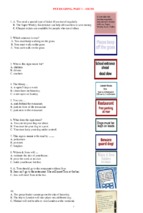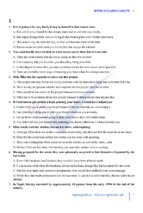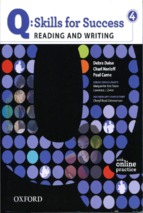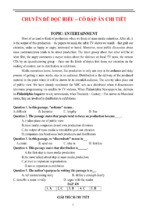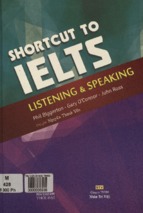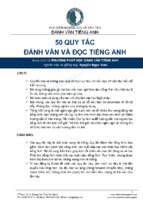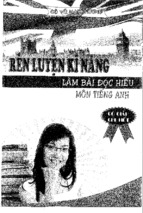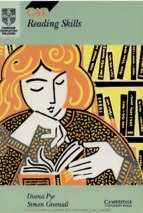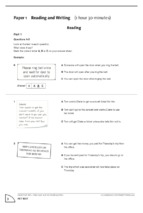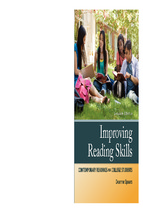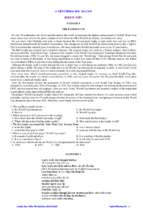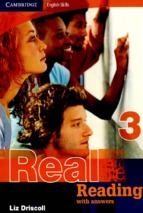110 bài đọc hiểu cực hay ( luyện thi đại học tiếng anh)
LUYỆN THI ĐẠI HỌC 2014-2015
BÀI ĐỌC HIỂU
PASSAGE 1
THE FAMOUS CUP
It's only 36 centimeters tall, but to fans throughout the world, it represents the highest achievement in football. Every four
years, teams from all over the globe compete to take home the FIFA World Cup Trophy, yet nobody ever does.
Do you know why? Nobody ever takes it home because the 18-carat gold trophy is kept under lock and key by FIFA
(Federation Internationale de Football Association). The champions of each World Cup tournament receive only a replica.
This is to protect the valuable prize from thieves, who have stolen the World Cup trophy twice in its 75-year history.
The little trophy has certainly had a troubled existence. The original trophy was made by a French sculptor, Abel LaFleur,
and was called the "Jules Rimet Cup," in honor of the founder of the World Cup tournament. Sometime during the first three
World Cup events (1930, '34 and '38), the name changed to simply the "World Cup." Then during World War II, not much
was seen or heard of the trophy. It was being kept hidden in a shoe box under the bed of Dr. Ottorino Barassi, the Italian
vice-president of FIFA, to prevent it from falling into the hands of the Nazi army.
Although the trophy made it safely through the war, it didn't fare so well during the turbulent 1960s. In 1966, the Cup was
stolen during a public showing of the trophy prior to the World Cup tournament in England. Luckily, it was found a short
time later none the worse for wear in a trash container, by a little dog named Pickles.
Four years later, Brazil earned permanent possession of the original trophy by winning its third World Cup title.
Unfortunately, the trophy was stolen a second time, in 1983, and was never recovered. The Brazilian Football Association
had to have a duplicate trophy made.
After the first trophy became the possession of Brazil's football association, a new World Cup Trophy for FIFA was
designed by an Italian artist, Silvio Gazazniga, in 1974. This trophy cannot be won outright, but remains in the possession of
FIFA, and rest assured they are keeping a close eye on it. Today, World Cup winners are awarded a replica of the trophy that
is gold-plated, rather than solid gold like the real one.
Gazazniga's World Cup trophy weighs almost five kilograms. Its base contains two layers of a semi-precious stone called
malachite, and has room for 17 small plaques bearing the names of the winning teams -enough space to honor all the World
Cup champions up to the year 2038. After that, a new trophy will have to be made.
1. This reading is mainly about……
A. the World Cup tournament
C. the World Cup trophy
B. thieves
D. World Cup stars
2. Which question is NOT answered in the reading?
A. How much does the World Cup trophy weigh?
B. Who made the first trophy?
C. Where did the police find the stolen trophy?
D. How much money is the trophy worth?
3. The first trophy was named the "Jules Rimet Cup" because Rimet…..
A. made the trophy
B. was a famous player
C. scored the final goal in 1930
D. came up with the idea of the World Cup
4. Which is true about Gazazniga's World Cup trophy?
A. It is made of gold and silver.
B. It is a replica of the first trophy.
C. It is in a museum in Brazil
D. It will only be used until 2038.
5. In which year did Brazil win the World Cup championship for the third time?
A. 1970
B. 1974
C. 1986
D. 2002
GLOSSARY 1
- trophy chiếc cúp (làm giài thưởng)
- 18-carat gold vàng 18 ca-ra
- to be kept under lock and key được cất giữ cẩn thận
- FIFA [Federation Internationale de Football Association]
Liên đoàn Quốc tế Các Hiệp Hội Bóng Đá
- replica bản sao
- troubled (adj) nhiều rắc rối
- sculptor nhà điêu khắc
- founder người sáng lập
- vice-president phó chủ tịch
- Nazi Đức Quốc Xã
- to make it safely through the war: an toàn qua được cuộc chiến tranh
- to fare well tiến triển tốt đẹp, ăn nên làm ra
- turbulent (adj) nhiều biến động
Luyện Đọc Hiểu Thi Đại Học 2014-2015
Ngân Phương Vy 1
PASSAGE 2
GOAL: ENDING CHILD LABOR
Carefully guiding a needle that's longer than his tiny fingers, a young boy in Pakistan stitches together the leather pieces of
a soccer ball. He sits crouched in the corner of a hot, airless shed for 12 hours. For his long day's work, he will earn 60 cents.
The boy is one of more than 200 million children who work at hard, sometimes dangerous jobs all over the world. Child
labor exists in two-thirds of the world's nations. From Indonesia to Guatemala, poor children as young as six are sent off to
work. Often they are mistreated and punished for not working hard enough. Children mix the gunpowder for firecrackers in
China and knot the threads for carpets in India, all for pennies a day. Sometimes they are sold as slaves.
In a speech to the Child Labor Coalition when he was U.S. Secretary of Labor, Robert Reich expressed gratitude for the
organization's work to end abuse of child labor, "You turned up the heat, and you got results." He also congratulated Craig
Kielburger, then 13, of Canada, who traveled the world for a year fighting for kids' rights. Craig believes kids can make a
difference. He offers this advice, "Write letters to companies and government officials. Put pressure on leaders to make
changes and to stop the misuse of children."
One solution to the child-labor problem in poor countries is education. "The future of these countries," Secretary Reich
declared, "depends on a work force that is educated. We are prepared to help build schools."
Education has helped to make the world a brighter place for one youth, Aghan of India. When he was nine, Aghan was
kidnapped from his home and sold to a carpet maker. Aghan's boss was very cruel. "I was always crying for my mother," he
recalls. Aghan's dream was to learn to write so that he could send letters to his parents. Fortunately, a group that opposes
child labor rescued Aghan from the factory. He was sent to a shelter in New Delhi where he worked hard to learn to write.
1. What is an example of dangerous work done by a child?
A. stitching a soccer ball
B. knotting carpet threads
C. mixing gunpowder
D. none of the above
2. When young children are forced to work,……
A. they never see their families.
B. they work but never get paid.
C. they are punished if they do not work hard. D. they are always sold as slaves.
3. Child labor is most common in…..
A. countries that make firecrackers.
B. poor countries.
C. countries that have slaverv.
D. countries that make carpets.
4. The children who work are often….. .
A. treated well
B. paid generously
C. misused
D. all of the above
5. When children are used to work for unfair wages in poor working conditions, it is best described as …..
A. an abuse of working children.
B. hard work.
C. a poor working environment.
D. unfair labor practices.
6. According to the article, children who work under poor conditions, ….
A. start to work only after age 13.
B. start to work only after age 12.
C. make only 60 cents an hour.
D. may make only 60 cents a day.
7. According to the article, what is the best way to keep many children from falling victim to the abuse of child labor in the
future?
A. Help poor countries educate their children.
B. Refuse to buy products made in countries that abuse child labor.
C. Rescue each child.
D. none of the above
8. Why do families allow young children to go to work?
A. They don't know how bad it is.
B. The grownups don't want to work.
C. The families are very poor and need the income.
D. The children are paid a lot of money.
9. How do you know Aghan was not happy making carpets away from his family?
A. He dreamed of learning to write.
B. He was rescued.
C. He cried for his mother.
D. He lives in a shelter.
Luyện Đọc Hiểu Thi Đại Học 2014-2015
Ngân Phương Vy 2
10. In New Delhi, Aghan……
A. worked for a group that is opposed to child labor.
B. received an education.
C. lived with his family.
D. made carpets.
GLOSSARY 2
- child labor tình trạng lao động trẻ em
- to stitch khâu bằng kirn
- leather da thuộc
- crouched (adj) lom khom, cúi gập người
- airless (adj) thiếu không khí, ngột ngạat
- shed nhà kho
- to mistreat sb ngược đãi ai
- gunpowder thuốc súng
- firecrackers pháo
- to knot the threads thắt gút các sợi chỉ
- carpet tấm thảm
- slave nô lệ
- Child Labor Coalition Liên Minh Chống Lao Động Trẻ Em
- Secretary of Labor Bộ Trưởng Lao Động Mỹ
- gratitude lòng biết ơn
- abuse sự lạm dụng
- to congratulate chúc mừng
- to fight for kids' rights đấu tranh cho quyền của trẻ em
- to put pressure on sb gây sức ép đối với ai
- to misuse sử dụng sai mục đích
- work force lực lượng lao động
- to kidnap bắt cóc
- cruel (adj) độc ác
- to oppose sth chống lại cái gi
- to rescue giải cứu
- shelter chỗ ở, chỗ trú thân
PASSAGE 3
Wikipedia is an encyclopaedia that is available on the Internet and what people love about it is that it can be edited by
absolutely everybody.
When and how did it start?
It was founded in 2001 by a guy called Jimmy Wales. It started as a fancy idea, a kind of a hobby and everybody is
surprised how popular it has become and how many computer scientists it has attracted. It has got a collection of about 1.8
mln articles, the majority of which are in English; however, one can find some articles in over 200 languages. If it was a
business, it would earn lots of money.
How is it possible that articles that can be changed by anyone are correct?
The Wikipedia is based on wikis - a special software which lets everyone modify a webpage and it is true that anyone can
change the information on the page if they think it's incorrect. But, the Wikipedia has a team of over 13,000 people who are
experts in different fields and who correct any inaccurate information sent by people.
Is it error-free?
One may say so. Recently, for example, the British journal Nature looked at the scientific information in Wikipedia and
confirmed it was very reliable and that they didn't find many errors. It was very good news for the founder as well as for all
the users.
Why is it becoming so popular?
Like the whole idea of the Internet, it's also quick and available to everyone. The greatest thing of all is that it is free. Some
people also stress that it's fun to be able to add what you know to the information on the net. IT specialists believe it has a
very bright future and most claim it's the most brilliant invention ever.
1. Wikipedia ……
A. was created by a team of computer scientists.
B. began as a business idea.
C. became popular as soon as it started.
D. started as one man's passion.
2. Articles in Wikipedia are ……
A. mostly about science.
B. mostly in English.
Luyện Đọc Hiểu Thi Đại Học 2014-2015
Ngân Phương Vy 3
C. translated into 200 languages.
D. very interesting.
3. Wikipedia remains accurate as much as possible because …..
A. all people who write for it are experts.
B. it has a special type of software programme.
C. there are people who monitor it for mistakes.
D. not everybody can change the information.
4. The best advantage of Wikipedia is that …..
A. you don't have to pay for it.
B. everyone can use it.
C. it is created by ordinary people.
D. is quick and reliable.
5. The text probably comes from …..
A. a leaflet
B. a speech
C. a scientific article
D. a magazine article
GLOSSARY 3
- encyclopaedia tự điển bách khoa
- error-free (adj) không có sai sót
- to edit biên tập, chỉnh sửa
- to confirm khẳng định
- to found thành lập
- to stress nhấn mạnh
- a fancy idea một ý tưởng ấp ủ sự say mê
- IT = Information Technology công nghệ thông tin
- mln = million
- passion niềm đam mê
- webpage trang web
- to monitor theo dõi để xử lý
PASSAGE 4
In today's competitive world, what responsible parent would not want to give their children the best possible start in life?
For this reason, many parents want their children, often as young as ten months old, to become familiar with computers.
They seem to think that if their children grow up with computers, they will be better equipped to face the challenges of the
future.
No one has proved that computers make children more creative or more intelligent. The truth may even be the opposite.
Educational psychologists claim that too much exposure to computers, especially for the very young, may negatively affect
normal brain development. Children gain valuable experience of the world from their interaction with physical objects. Tenmonth-old babies may benefit more from bumping their heads or putting various objects in their mouths than they will from
staring at eye-catching cartoons. A four-year-old child can improve hand-eye coordination and understand cause and effect
better by experimenting with a crayon than by moving a cursor around a computer screen. So, as educational psychologists
suggest, instead of government funding going to more and more computer classes, it might be better to devote resources to
music and art programs.
It is ludicrous to think that children will fall behind if they are not exposed to computers from an early age. Time is too
precious to spend with a "mouse". Now is the time when they should be out there learning to ride a bike. There will be time
later on for them to start banging away at keyboards.
1. Why do parents want their children to learn how to use a computer from an early age?
A. Because they are afraid their children will become competitive.
B. Because they want their children to be well prepared for their future.
C. Because this is what all the other parents seem to do.
D. Because they believe their children will have difficulty learning to use one if they don't start early.
2. Children who spend a lot of time on their computers…..
A. do not necessarily make more progress than those who don't.
B. tend to like music and art more than those who don't.
C. will suffer from brain damage.
D. tend to have more accidents than those who don't.
3. The author implies that children learn better ….
A. after they have developed hand-eye coordination.
B. when they use a computer.
C. as they get older.
D. when they hold and feel things around them.
4. What would be an appropriate title for this passage?
A. Never too early to start
B. Let kids be kids
C. Computers in schools
D. More computers mean brighter future
Luyện Đọc Hiểu Thi Đại Học 2014-2015
Ngân Phương Vy 4
5. What is true according to the passage?
A. It is better for children to take computer lessons than art lessons.
B. Parents should not put off buying a computer for their children.
C. Computers seriously harm children's eyesight.
D. There is no evidence that children who use computers are more clever than those who do not.
6. What does the word "ludicrous" in the third paragraph (first sentence) mean?
A. ridiculous
B. humorous
C. ironic
D. sensible
GLOSSARY 4
- to be exposed to sth phài hứng chịu, phài nếm trài, có cơ hội tiếp xúc với (exposure)
- hand-eye coordination sự phối hợp giữa tay và mắt
- crayon bút chì màu
- interaction with sự tương tác với
- cursor con nháy, con trỏ trên màn hình
- to bump one's head va đầu
- funding sự tài trợ
- eye-catching (adj) hấp dẫn, bắt mắt
- to bang away at sth đập mạnh vào
PASSAGE 5
A massage is relaxing, and makes you feel great, but did you know that it's also good for you? That's what doctors are now
saying. Massage relieves pain and anxiety, eases depression and speeds up recovery from medical problems.
Research has shown that people of all ages benefit from touch. Premature infants who are held develop faster than those
left alone, and healthy babies who get a lot of physical contact cry less and sleep better. Researchers are not sure why this
occurs but they have also found out that touch can slow heart rate, lower blood pressure and increase levels of seratonin, the
brain chemical that is linked to well-being. It also decreases levels of the stress hormone cortisol, and this in turn increases
your resistance to illness.
Massage also speeds up healing. Bone-marrow transplant patients who were given massages had better neurological
function than those who weren't. Furthermore, massage reduced pain by 37% in patients with chronic muscle aches.
Giving someone a massage may be as good as getting one. A study conducted by the university of Miami found that
mothers suffering from depression felt better after massaging their infants. In that same study, elderly volunteers who
massaged infants reported feeling less anxious and depressed.
It even works when you do it yourself; 43% of headache sufferers reported getting relief after massaging their temples and
neck and smokers who were taught self-massage while trying to quit felt less anxiety and smoked less.
1. What has recently been said about getting a massage?
A. It relaxes you.
B. It makes you feel good.
C. It improves your physical condition.
D. It requires a special technique.
2. Babies born before their time …..
A. cry less and sleep better if they are massaged.
B. grow faster if they are held.
C. develop faster than healthy babies if they get a lot of physical contact.
D. don't survive if they are not held.
3. The author suggests that touch ….
A. increases levels of the stress hormone cortisol.
B. makes your heart beat faster.
C. increases the feeling of well-being.
D. helps you deal with your feelings.
4. Patients who get massages ….
A. don't experience muscle pain.
B. avoid having surgery.
C. make a quicker recovery.
D. are not better off than those who do not.
5. According to the article….
A. massage has no effect on smokers.
B. massage relieves headaches by 43%.
C. smokers who gave others massages felt less anxious and smoked less.
D. massaging yourself is as effective as being massaged.
Luyện Đọc Hiểu Thi Đại Học 2014-2015
Ngân Phương Vy 5
6. What did the study conducted in Miami show?
A. Elderly volunteers who got massages felt less anxious.
B. Mothers were depressed after massaging their babies.
C. Babies who got massages felt better.
D. Giving a massage is as beneficial as getting one.
7. What is NOT true according to the article?
A. Mothers will suffer from depression if they don't massage their babies.
B. People can learn to massage themselves.
C. Massage is good for you regardless of whether you're giving or getting one.
D. It helps smokers quit smoking.
GLOSSARY 5
- relaxing (adj) gây cảm giác dễ chiu
- resistance to sự đề kháng đối với
- depressed (adj) trầm cảm (depression)
- bone-marrow transplant sự cấy ghép tủy xương
- to speed sth up đẩy nhanh cái gì
- premature infant trẻ sinh thiếu tháng
- neurological (adj) thuộc về thần kinh
- heart rate nhịp tim
- chronic (adj) mãn tính
- blood pressure huyết áp
- muscle ache sự đau nhức cơ bắp
- well-being trạng thái mạnh khỏe
- temple thái dương
- self-massage sự tự xoa bóp
PASSAGE 6
If we took a look at how people in Europe communicated just one hundred years ago, we would be very surprised to find
out that English was hardly used outside the United Kingdom. The language most commonly used between people of
different nationalities, and particularly the aristocracy, was French. In fact, French was the language of diplomacy, culture
and education. However, that is not the case nowadays. English has replaced French as the international language of
communication. Today there are more people who speak English as a second language than people who speak it as a first
language.
There are many reasons why English has become the language of international communication. Britain's colonization of
many parts of the world had something to do with it, but it is mainly due to America's rise to the position of major world
power. This helped spread popular American culture throughout the world bringing the language with it.
But is it good that English has spread to all parts of the world so quickly? Language specialists seem to be divided over this
issue. There are those who claim that it is important to have a language that the people in our increasingly globalized world
have in common. According to others, English is associated with a particular culture and therefore promotes that culture at
the expense of others. Linguists have suggested "Esperanto", an artificially put-together language, as a solution to
international communication problems but without success. So, English will continue being the world language until some
other language, maybe Chinese, which is the most widely-spoken native language in the world, takes over as the world's
international language instead of English.
1. According to the passage, a century ago….
A. educated people throughout Europe spoke English.
B. foreign travelers to England spoke only French.
C. French was much more popular than English.
D. only the French aristocracy could speak English.
2. What is chiefly responsible for the growth in popularity of English?
A. Britain's becoming an international power.
B. The French losing many colonies.
C. America's becoming powerful.
D. The development of American culture.
3. What is meant by "the language of diplomacy" (lines 4)?
A. The language used by ordinary people.
B. The language used by the English and the French.
C. The language used by the aristocracy.
D. The language used by governments.
4. What is true according to the passage?
A. The experts don't like Esperanto.
B. Esperanto is difficult to learn.
Luyện Đọc Hiểu Thi Đại Học 2014-2015
Ngân Phương Vy 6
C. Esperanto is not a natural language
D. Esperanto is becoming more and more popular.
5. The experts' opinion on the spread of English is …..
A. split
B. positive
C. negative
D. undecided
6. The author believes that …..
A. English is easier to learn than Chinese.
B. English will probably be replaced as an international language.
C. Chinese is going to be the next language of international communication.
D. Chinese is growing in popularity among non-native speakers.
7. These days ……
A. French is the language of diplomacy.
B. more non-natives speak English than natives.
C. more people speak French than English.
D. French is a dying language.
8. What would be a good title for this passage?
A. English; Past, Present and Future
B. English as an international Language
C. English language means English culture
D. English: a difficult language to learn
GLOSSARY 6
- aristocracy giai cấp quý tộc
- globalized (adj) đã toàn cầu hóa
- colonization sự khai thác thuộc địa
- at the expense of sb (trong khi) gây thiệt thòi cho người khác
- to be divided over bất đồng ý kiến về
PASSAGE 7
The term "dyslexia" is used to describe a number of problems associated with reading, writing or spelling. Short-term
memory, mathematics, concentration, personal organization and sequencing may also be affe ^ted. We do not know exactly
what causes dyslexia, but we do know tha. it tends to run in the family. We also know that more boys suffer from dyslexia
than girls and that dyslexia is more common in urban areas than in rural.
One of the most common signs of dyslexia is "reversals". People with this kind of problem often confuse letters like "b"
and "d" when reading and writing or they sometimes read and write words like "tip" and "won" as "pit" and "now". Other
common characteristics are lack of punctuation, misspelling, mixed-up sentence structure and poor grammatical
construction.
People are born with dyslexia, but it is only when they begin to learn to write that it becomes a noticeable problem. For
children with dyslexia, going to school can be a traumatic experience. Poor achievement can make them feel frustrated and
insecure. They are reluctant to go to school and sometimes even skip school altogether. Cheating, stealing and
experimenting with drugs can also occur when children regard themselves as failures.
It is a common misconception that dyslexic people are of inferior intelligence. Yet Albert Einstein, Leonardo da Vinci,
Thomas Edison and Hans Christian Andersen were apparently all dyslexic. There is no total cure for dyslexia; however, the
effects of dyslexia can be lessened with the guidance of skilled specialists and a lot of determination.
1. When does it become apparent that a child may be suffering from dyslexia?
A. when they are born
B. when they begin their education
C. when they use symbols instead of words
D. when they start talking
2. According to the passage, dyslexic children
A. might have behavioral problems.
B. end up taking drugs.
C. look forward to going to school.
D. do well at school.
3. The passage states that one common characteristic of dyslexics is that they...
A. have difficulty expressing their feelings.
B. are not able to read three-letter words.
C. have difficulty learning the letter "b".
D. read words backwards.
4. The purpose of this passage is to inform readers that
A. Albert Einstein was dyslexic.
B. it is difficult for dyslexics to get professional help.
C. dyslexics are as intelligent as other people.
D. dyslexics are inferior to other people.
5. Who is more likely to be dyslexic?
Luyện Đọc Hiểu Thi Đại Học 2014-2015
Ngân Phương Vy 7
A. girls
B. children who live in the country
C. children who are not bright
D. children whose parents are dyslexic
6. How can the effects of dyslexia be made less severe?
A. by learning to live with them
B. by learning a special skill
C. with professional help and hard work
D. by learning how to deal with failure
7. According to the passage, which of the following is true?
A. Dyslexia refers to a specific learning disability.
B. Dyslexic people become famous.
C. Dyslexia affects only reading and writing skills
D. The causes of dyslexia haven't been fully explained.
GLOSSARY 7
- dyslexia /dɪs’leksiə/ chứng đọc và viết khó - dyslexic (adj)
- short-term memory trí nhớ ngắn hạn / trí nhớ sơ cấp
- sequencing khả năng liên kết các sự kiện
- to run in the family có tính di truyền
- reversal sự đảo ngược
- misspelling sự đánh vần sai
- mixed-up (adj) lộn xộn, rối loạn
- traumatic (adj) gây chấn thương
- frustrated (adj) chán nản, thất vọng
- insecure (adj) bất an, không yên tâm
- to skip school bỏ học
- misconception quan niệm sai lầm
- inferior (adj) thấp kém
- to lessen làm giảm bớt, làm nhẹ đi
PASSAGE 8
Back in 1853, at the age of 24, Levi Strauss opened a west coast branch of his brother's dry goods business in New York.
Over the next twenty years, he built his business into a lucrative operation.
One of Levi's customers was a tailor by the name of Jacob Davis. Originally from Latvia, Jacob lived in Reno, Nevada, and
regularly pur-chased bolts of cloth from Levi Strauss & Co. Among Jacob's customers was a man who kept ripping the
pockets on the pants that Jacob made for him. Jacob tried to find a way to strengthen his customer's pants when, one day, it
finally occurred to him. He decided to put metal rivets on the pocket corners and at the base of the button fly. It worked and
the pants became an instant success.
Jacob knew he had discovered something new and worried that someone might steal his idea. That's why he decided to
apply for a patent, but he didn't have the $68 that was required for the paperwork. So, he turned to Levi Strauss. He wrote
him a letter suggesting that they hold the patent together. Being the businessman that he was, Strauss agreed immediately
seeing the potential for this new product. So, on May 20, 1873, the two men received patent number 139,121 from the US
Patent and Trademark Office and went into business together. That was the day blue jeans were born. Who would have
thought back then that denim, thread and a little metal would become the most popular clothing product in the world and it's
all thanks to two men - Levi Strauss and Jacob Davis.
1. According to the passage, why did Jacob write to Levi?
A. He didn't have the necessary funds to get a patent.
B. He didn't know how to apply for a patent.
C. He had no one else to turn to.
D. He knew Levi had the right connections.
2. Which of the following titles best summarizes the content of the passage?
A. The Beginning of a Successful Partnership
B. The History of Jeans
C. How Jeans Were Invented
D. The Lives of Levi Strauss and Jacob Davis
3. According to the passage, what happened in 1853?
A. Levi set up a business with his brother,
B. Levi moved to the west coast.
C. Levi became a successful businessman.
D. Levi started working on his own.
4. What is true about Jacob Davis?
A. He was Levi's friend.
Luyện Đọc Hiểu Thi Đại Học 2014-2015
Ngân Phương Vy 8
B. He was Levi's customer in Latvia.
C. He was Levi's business partner,
D. He was Levi's tailor.
5. Why did Jacob'put metal rivets on the pants he made?
A. because his customers asked for it
B. because he wanted to prevent something from happening
C. because it was fashionable
D. because he wanted to do something different
6. Why did Levi accept Jacob's offer?
A. because he knew it would pay off
B. because his business was in trouble
C. because he was looking to expand his business
D. because Jacob was a good customer
7. In 1873, Levi and Jacob…… .
A. founded their first company.
B. applied for a patent number.
C. made their first blue jeans.
D. got their first customers.
GLOSSARY 8
- lucrative (adj) sinh lời, nhiều lợi nhuận
- bolt of cloth cuộn vải, súc vải
- to rip làm rách
- pants cái quần tây
- rivet con đinh tán “ri-vê”
- base phần phía dưới, phần đáy
- button fly cửa quần
- patent bằng sáng chế
- paperwork giấy tờ hành chính
- Patent and Trademark Office Sở cấp bằng phát minh và công nhận thương hiệu
- denim [tên loại vải để may quần jeans]
- thread sợi chỉ khâu
- to pay off (rốt cuộc) mang lại lợi ích
PASSAGE 9
PROTECT OUR PLANET WITH CAT!
Back in the 1960s and 70s, the world was becoming more aware of the destructive effects of industry on the environment
and people were starting to think seriously about ways of protecting the environment. One man who was particularly
affected by this subject was Gerard Morgan-Grenville. As Morgan-Grenville travelled round earning his living as a
gardener, he noticed signs of the damage that was being done to the countryside around him. It wasn't long before MorganGrenville decided that he had to do something about this situation. He felt that if people could be shown a better way of
living then maybe they would be interested enough to try to protect their precious environment.
Mr Morgan-Grenville decided to set up a project that would prove what was happening to our surroundings and what could
be done about it. So, in 1975, Morgan-Grenville created the Centre for Alternative Technology (CAT) in a village in Wales.
The main aim of CAT is to search for an ecologically better way of living by using technology that does not harm the
environment. One of the most important things CAT did initially was to explore and demonstrate a wide range of techniques
and to point out which ones had the least destructive results on the world around us. It is also very important for CAT to
provide information and advice to people all over Britain and all over the world. If more and more individuals are informed
about how much damage our modern lifestyle is doing to the planet, maybe more of them would be prepared to look for
solutions.
The point about CAT is that by combining theoretical and practical ideas, it has shown ways in which people, nature and
technology can exist together successfully. CAT now covers many themes, including energy-saving techniques, good use of
land, the correct management of waste products, recycling and health and food issues. Visitors to CAT are able to observe
many new ways of living, all of which are ecologically correct and use up less of our valuable raw materials. For example,
the sewage systems at CAT that get rid of all the waste from the kitchens and bathrooms are organised so as to be
completely environmentally friendly, and much of the energy used at the centre is created by power from the sun, wind or
rain. In addition, all the building methods used are ecologically ideal and no chemicals are used at the centre; for instance,
no chemicals are used in gardening or cleaning. Every-thing is based on the use of natural products.
One major global problem is the damage done to the whole planet by the effects of industry. Problems such as global
warming, the holes in the ozone layer, the destruction of huge areas of forests, and pollution in our atmosphere are all
connected to the fact that there is an increase in industry. Now, at last, this problem is being recognised worldwide.
People now agree that we want clean air, pure drinking water, safe sunlight and healthy food. What CAT is trying to do is
to demonstrate that we can have all those things without the environment paying the price. Slowly, CAT is communicating
its message to countries across the world. In Europe, several countries have set up similar ecological centres to look at
Luyện Đọc Hiểu Thi Đại Học 2014-2015
Ngân Phương Vy 9
alternative environmentally friendly technology. The workers at CAT hope that one day there will be so many centres all
over the world that governments and managers of industry will start to change their ideas and will think more carefully
about the environment. Once this happens, the possibilities for protecting our beautiful planet will be endless.
1. Mr Morgan-Grenville was worried about….
A. the damage his gardening was doing to the countryside.
B. the countryside being harmed.
C. people protecting the environment.
D. what he did for a living in the countryside.
2. One of the main aims of CAT is ….
A. to use better technology to harm the environment.
B. to use less technology in the environment.
C. to stop using technology that does not harm the environment.
D. to use technology that causes less damage to the environment.
3. Which one of the following statements is true?
A. CAT uses a mixture of theory and practice to explain its message.
B. CAT only uses practical solutions to explain its message.
C. CAT has demonstrated how successful its theories are.
D. CAT believes it would be better if technology didn't exist.
4. Visitors to CAT ….
A. can use valuable raw materials.
B. are all ecologically correct.
C. can see new ideas in practice.
D. can see valuable raw materials.
5. The increase in industry worldwide….
A. has led to an increase in environmental problems.
B. is due to the damage done to the whole planet.
C. is a result of efforts to protect the environment.
D. has been caused by problems like global warming.
6. The workers at CAT are hoping …..
A. that their managers will start to change industry.
B. that their ideas will be used all over the world.
C. that our beautiful planet will end.
D. that it can protect governments and managers worldwide.
GLOSSARY 9
- the Centre for Alternative Technology Trung Tâm Sử Dụng Công Nghệ Thay Thế
- initially (adv) lúc ban đầu
- theoretical (adj) thuộc về lý thuyết
- theme chủ đề
- waste products các chất thải, phế phẩm
- sewage system hệ thống xử lý chất thải
PASSAGE 10
AN UNWELCOME GUEST
Of the one in seven people in the UK who claim to have seen a ghost, the majority are women. This may be because
women have far more association with the spirit world. Women trust their emotions and are generally better able than men
to cope with the unexpected.
Housewife Fiona Blair describes herself as very practical and down-to-earth, and never believed in the idea that a house
could be haunted. That all changed when she and her family moved into a manor house in the Midlands. Although the
surveyor reckoned that the house re-quired a lot of attention and was somewhat damp, they thought it was stunning. They
could just afford it and it would be a good investment, so they took the plunge and decided to buy it.
Nonetheless, right from the start, Fiona had a strange sense that they were not alone in the house. One of her teenage
daughters had left a towel over the back of a chair in the kitchen. Fiona was in the garden, and when she returned to the
house, the towel was over the kitchen table like a tablecloth. On other occasions the family would find that objects such as
glasses and vases had been turned upside-down.
This was only the start of the peculiar happenings. A particularly strange incident happened on Fiona's birthday. Fiona's
husband, Mark, came home from work and went into the living room. He immediately came rushing out to ask who had
bought her the beautiful flowers -but nobody had given Fiona flowers and her daughters had not put the flowers there. It
remained a mystery how they had miraculously appeared.
Fiona was curious and decided to find out about the history of the house. What she discovered was rather alarming.
Apparently a young girl, servant to a previous generation of owners, had been found dead in peculiar circumstances in the
attic. Fiona and her family inevitably began to feel claustrophobic and trapped in the house, and eventually decided that they
would have to move.
Luyện Đọc Hiểu Thi Đại Học 2014-2015
Ngân Phương Vy 10
Unfortunately, things were not as simple as that. Each time they at-tempted to show the house to potential buyers, Fiona
would of course ensure beforehand that everything was neat and tidy in order to make a good impression. But by the time
anyone arrived, the entire house would be in a complete mess, and visitors complained of an unpleasant atmosphere.
Eventually, after many months, an American couple viewed the house, and decided it had a certain attraction. For some
reason, the ghost did not play its usual tricks, and Fiona was able to sell what had been her dream home.
Now living in a spacious modern apartment in London, Fiona wants to forget it all and move on with her life. "At one point
I thought I might be going out of my mind, it was all so frightening. We can almost laugh about it all now, but I hope we
never experience anything like that again.
1. Why did the writer and her husband want to move into the house in the Midlands?
A. They were eager to find out if it had a ghost.
B. They were attracted by the appearance of it.
C. They knew someone important had lived there.
D. They werejooking for a house to modernise.
2. After they moved in, they ….
A. began to hear strange noises in the attic.
B. realised that the house was incredibly cold.
C. discovered that objects were being moved.
D. broke a lot of glasses.
3. What happened on Fiona's birthday?
A. Her daughters bought her flowers.
B. There was an unexplained occurrence.
C. A burglar broke into the living room.
D. Mark forgot to buy a present.
4. What had happened to the servant girl?
A. She had killed herself in the attic.
B. She was murdered by the owners.
C. She had been locked in the attic.
D. She died in the house.
5. What did the ghost do when they decided to sell the house?
A. It disappeared immediately.
B. It made people viewing it feel unwelcome.
C. It tidied the house.
D. It made horrible noises.
6. What does "it" (first sentence of the last paragraph) refer to?
A. the house she lived in
B. the modern apartment
C. the experience she had
D. the sale of the house
GLOSSARY 10
- spirit 1) tinh thần 2) tâm linh 3) bóng ma
- stunning (adj) tuyệt vời, rất hay
- to be turned upside-down bị lật úp
- down-to-earth (adj) thực tế
- attic rầm thượng, gác xép
- haunted (adj) (nhà) bị ma ám
- claustrophobic (adj) cảm thấy sợ khi ở trong không gian đóng kín
- the Midlands vùng Trung Nguyên (ở Anh)
- to play tricks giở trò chọc phá
- surveyor nhân viên địa chính
- spacious (adj) rộng mênh mông
- to reckon cho là, đoán là
- to go out of one's mind phát điên
Luyện Đọc Hiểu Thi Đại Học 2014-2015
Ngân Phương Vy 11
ANSWER KEYS
Câu
Passage
1
2
3
4
5
Passage 1
C
D
D
D
A
Passage 2
C
C
B
C
A
Passage 3
D
B
C
A
D
Passage 4
B
A
D
B
D
A
Passage 5
C
B
C
C
D
D
A
Passage 6
C
C
D
C
A
B
B
Passage 7
B
A
D
C
D
C
D
Passage 8
A
C
D
C
B
A
A
Passage 9
B
D
A
C
A
B
Passage 10
B
C
B
D
B
C
6
7
8
9
10
D
A
C
C
B
B
PASSAGE 11
A recent survey of crime statistics shows that we are all more likely to be burgled now than 20 years ago and the police
advise everyone to take a few simple precautions to protect their homes.
The first fact is that burglars and other intruders prefer easy opportunities, like a house which is very obviously empty. This
is much less of a challenge than an occupied house, and one which is well-protected. A burglar will wonder if it is worth the
bother.
There are some general tips on how to avoid your home becoming another crime statistic. Avoid leaving signs that your
house is empty. When you have to go out, leave at least one light on as well as a radio or television, and do not leave any
curtains wide open. The sight of your latest music centre or computer is enough to tempt any burglar.
Never leave a spare key in a convenient hiding place. The first place a burglar will look is under the doormat or in a flower
pot and even somewhere more "imaginative" could soon be uncovered by the intruder. It is much safer to leave a key with a
neighbour you can trust. But if your house is in a quiet, desolate area be aware that this will be a burglar's dream, so deter
any potential criminal from approaching your house by fitting security lights to the outside of your house.
But what could happen if, in spite of the aforementioned precautions, a burglar or intruder has decided to target your home.
Windows are usually the first point of entry for many intruders. Downstairs windows provide easy access while upstairs
windows can be reached with a ladder or by climbing up the drainpipe. Before going to bed you should double-check that all
windows and shutters are locked. No matter how small your windows may be, it is surprising what a narrow gap a
determined burglar can manage to get through. For extra security, fit window locks to the inside of the window.
What about entry via doors? Your back door and patio doors, which are easily forced open, should have top quality
security locks fitted. Even though this is expensive it wrill be money well spent. Install a burglar alarm if you can afford it as
another line of defence against intruders.
A sobering fact is that not all intruders have to break and enter into a property. Why go to the trouble of breaking in if you
can just knock and be invited in? Beware of bogus officials or workmen and, particularly if you are elderly, fit a chain and
an eye hole so you can scrutinise callers at your leisure. When you do have callers never let anybody into your home unless
you are absolutely sure they are genuine. Ask to see an identity card, for example.
If you are in the frightening position of waking in the middle of the night and think you can hear an intruder, then on no
account should you approach the intruder. Far better to telephone the police and wait for help.
1. A well-protected house ….
A. is less likely to be burgled.
B. is regarded as a challenge by most criminals.
C. is a lot of bother to maintain.
D. is very unlikely to be burgled.
2. According to the writer, we should ….
A. avoid leaving our house empty.
B. only go out when we have to.
C. always keep the curtains closed.
D. give the impression that our house is occupied when we go out.
3. The writer thinks that hiding a key under a doormat or flower pot….
A. is a predictable place to hide it.
B. is a useful place to hide it.
C. is imaginative.
Luyện Đọc Hiểu Thi Đại Học 2014-2015
Ngân Phương Vy 12
D. is where you always find a spare key.
4. The "aforementioned precautions" refer to steps that ….
A. will tell a burglar if your house is empty or not.
B. are the most important, precautions to take to make your home safe.
C. will stop a potential burglar.
D. will not stop an intruder if he has decided to try and enter your home.
5. Gaining entry to a house through a small window ….
A. is surprisingly difficult.
B. is not as difficult as people think.
C. is less likely to happen than gaining entry through a door.
D. is tried only by very determined burglars.
6. According to the writer, window locks, security locks and burglar alarms …..
A. cost a lot of money but are worth it.
B. are good value for money.
C. are luxury items.
D. are absolutely essential items.
7. The writer argues that fitting a chain and an eye hole….
A. will prevent your home being burgled.
B. avoids you having to invite people into your home.
C. is only necessary for elderly people.
D. gives you time to check if the visitor is genuine.
8. The best title for the text is …..
A. Increasing Household Crime.
B. Protecting Your Home from Intruders
C. What To Do if A Burglar Breaks into Your Home.
D. Burglary Statistics.
GLOSSARY 11
- survey cuộc khảo sát
- crime statistics số liệu thống kê các vụ pham tội
- to burgle a house vào ăn trộm một ngôi nhà
- take precautions áp dụng các biện pháp đề phòng
- intruder kẻ đột nhập
- occupied (adj) đang có người ở bên trong
- bother sự bận tâm, sự bỏ công
- music centre dàn máy nghe nhac
- to tempt cám dỗ
- doormat tấm thảm chùi chân ở cửa ra vào
- to uncover phát hiện, khám phá
- to leave sth with sb gởi cái gi lại nơi ai
- aforementioned (adj) được kể ra trên dây
- to target sth chon cái gì làm mục tiêu, nhắm tới cái gì
- point of entry điểm đột nhập, lối vào
- drainpipe ống máng xối
- to double-check kiểm tra kỹ
- shutter cánh cửa sổ
- determined (adj) quyết tâm
- patio khoàng sân ngoài nhà
- money well spent tiền tiêu đúng chỗ
- line of defence phòng tuyến
- sobering (adj) đáng suy gẫm
- Beware of sth Hãy coi chừng cái gi
- bogus (adj) già mao, mạo danh, bất hợp lệ
- chain dây xích
- eye hole lỗ nhỏ trên cửa để quan sát ngưòi đứng ngoài
- to scrutinise quan sát kỹ
- caller người ghé thăm
- to do sth at one's leisure làm gì một cách thư thà không cần gấp gáp
- identity card giấy tờ tùy than, thẻ căn cước, chứng minh nhân dân
Luyện Đọc Hiểu Thi Đại Học 2014-2015
Ngân Phương Vy 13
PASSAGE 12
HEALTHY LIVING FOR TEENAGERS
Food
In a recent government survey on healthy eating teens scored only 5 out of 10 (8 indicated a healthy diet and 6 a "passable"
one). Only 1 in 10 teens eats the recommended amount of fruit and the only vegetable that many teens eat is "chips". Most
teens in the developed world are eating too much but are still not getting the vital nutrients to help them grow and stay
healthy. More information about nutrition and healthy eating is needed to help young people eat properly. Teens who diet
often cut out food they need, such as bread or milk, because they think it is fattening.
Others don't know what foods to choose in the school canteen in order to have a balanced diet. There is a saying "you are
what you eat". So if you want to become the next David Beckham then you'd better start eating properly.
Exercise
Lack of money in schools plus increased pressure to do well in the course exams means that teenagers are doing less sport
in school than ever before. Girls, in particular, are more likely to suffer from lack of exercise and up to 4 in 10 girls stop
playing sports in their early teenage years. Just because you aren't sporty doesn't mean you can't be active. Walk or cycle to
school instead of taking the bus. Help at home with the housework or gardening. Go dancing with your friends. There are
lots of ways you can stop being a couch potato!
Sleep
If "we are what we eat" then sleep is like food for the brain. Teens need at least 9 hours' sleep every night and even mild
sleepiness can affect your performance, humour and health. Lack of sleep can make you tired, angry or depressed. Nearly
40% of secondary school students go to bed after 11 p.m. on school nights and 15% of teens say they have fallen asleep
during class. In the USA some schools are starting classes at 10 a.m. so that teens can get some extra sleep. These schools
have noticed an improvement in their students' work.
1. The text suggests that teenagers ….
A. are healthier than their parents were.
B. don't have enough information about healthy eating and lifestyle.
C. sleep more than is needed.
D. do more sports in schools than before.
2. According to the text, teens who go on a diet cut down on ….
A. vegetables.
B. bread and milk.
C. chips.
D. meat.
3. Most teens in the developed world …..
A. eat too much but are not eating healthy food.
B. eat properly and stay healthy.
C. eat less and grow and stay healthy.
D. eat a lot of vegetables and healthy food.
4. Schools put pressure on students to ....
A. do well in sports.
B. improve their physical condition.
C. do well in course exams.
D. take a bus instead of walking or cycling to school.
5. According to the text, many secondary school students on school nights ....
A. sleep at least 9 hours.
B. feel angry or depressed.
C. play computer games.
D. go to bed after 11 p.m.
6. According to the text, some schools in the USA have changed the starting time of lessons because ....
A. they wanted to please their students.
B. they wanted to improve students' performance.
C. parents insisted on changing the time.
D. teachers complained about how unmotivated the students were.
GLOSSARY 12
- to score 1) đạt được một điểm số 2) ghi duoc (1 bàn thắng)
- nutrient chất dinh dưỡng
- sporty (adj) thích / giỏi thể thao
- passable (adj) đạt yêu cầu, chấp nhận được
- couch potato (colloq.) người nghiện xem TV
- depressed (adj) buồn bã, trầm cảm
- vital (adj) thiết yếu
- unmotivated (adj) thiếu hứng thú
Luyện Đọc Hiểu Thi Đại Học 2014-2015
Ngân Phương Vy 14
PASSAGE 13
GRAFFITI - A DANGEROUS WAY OF LIFE
Scrawling graffiti is seen as a crime in the UK, yet in the US it has become a recognized art form.
Just a few weeks ago eight graffiti gang members were convicted of causing £5,000 worth of damage on the London
Underground. They are among more than 70 hard-core graffiti artists thought to be operating in London today. Most are
aged under 20.
Graffiti artists, or "graffers", operate in many British towns. They often work at night, covering walls, trains and railway
stations with brightly painted murals or scrawls in spray paint and marker pen.
Some people regard graffiti as a form of vandalism and a menace, London Underground says that rail users find it ugly and
offensive. It spends £2m a year dealing with graffiti, and has even introduced trains vith graffiti-resistant paint. "We don't
think it's artistic or creative - it's vandalism, it's a huge nuisance to our customers, and it's ugly and of-fensive," says Serena
Holley, a spokeswoman for the London Underground. "It creates a sense of anarchy and chaos," says Richard Mandel, a
barrister who prosecuted the graffiti gang. "Passengers feel is if the whole rail system is out of control."
British Transport Police has a graffiti unit designed to catch graffers in the act. It spent five months tracking down the
recently prosecuted gang.
Graffiti art can also be a dangerous pastime. The London Underground says that some teenagers have died in accidents
during nocturnal graffiti "raids".
However, others say that graffiti at its best is an art form. Art galleries in London and New York have exhibited work by
increasingly famous graffiti artists. "Of course graffiti is art. There's no question about that," says David Grob, director of
the Grob Gallery in London. Even some of those who think graffiti is wrong admit that graffers are talented. "It's just that
their artistic talent is channeled in the wrong direction," says Barry Kogan, a barrister who represented Declan Rooney, one
of the gang members.
There is a difference between "good graffiti" and vandalism, says Dean Colman, a 24-year-old graffiti artist. "I'd never
spray private property, like someone's house. Some graffiti are disgusting. There's a big difference between that and graffiti
which can brighten up grey walls."
Dean makes a living as a graffiti artist. His days of illegal spraying are behind him, he says. He has worked on a television
programme about graffiti, designed a series of government posters, and decorated nightclubs. He has exhibited his work at
Battersea Arts Centre in London, and he has taught graffiti-spraying in youth clubs.
Dean sees himself as an artist, and thinks that graffiti art does not get due recognition. "There's no graffiti art in the Tate
Gallery and there should be," he says. "Graffiti is a valid as any other art form."
1. The graffiti artists arrested recently in London were ….
A. put in prison
B. fined £5,000
C. wrongly accused
D. found guilty
2. The attitude of London Underground is that graffiti ….
A. is a kind of art, but a problem because some passengers don't like it.
B. is something to be stopped at all cost.
C. is irritating but they have more serious problems to worry about.
D. is causing the price of tickets to go up and therefore needs to be stopped.
3. The British Transport Police ….
A. have killed some 'graffers' by accident.
B. spent a lot of time trying to catch a group of graffiti artists.
C. have recently criticized the behavior of the London Underground.
D. don't know what to do about the problem.
4. Bary Kogan, who defended one of the convicted graffiti artists, thinks they ….
A. should show their work in art galleries.
B. should not have been convicted.
C. should use their abilities in different ways.
D. should be more careful when working in the Underground.
5. Dean Colman ….
A. has never broken the law.
B. is concerned about how little he earns from his work with graffiti.
C. would like to see graffiti taken more seriously by the art world.
D. is worried about young people taking up graffiti-spraying.
6. The writer …..
A. is for people who draw graffiti.
B. is against people who draw graffiti.
C. points his opinion quite unclearly.
D. supports the attitude of the London Underground towards graffers.
Luyện Đọc Hiểu Thi Đại Học 2014-2015
Ngân Phương Vy 15
GLOSSARY 13
- graffiti sự viết /vẽ bậy
- gang nhóm / băng đảng
- to be convicted of bi buôc vào tội
- hard-core (adj) trung kiên, cốt cán
- mural tranh tường, bích họa
- scrawl (v.) viết chữ nguêch ngoạc; (n.) chữ nguệch ngoạc
- spray paint sơn xịt từ bình khí nén
- marker pen bút nét lớn
- vandalism hành vi phá hoại của công
- menace mối đe dọa
- railuser khách đi tàu hòa
- offensive (adj) gây khó chịu
- graffiti-resistant paint loại sơn chống viết vẽ bậy
- spokeswoman nữ phát ngôn viên
- anarchy tình trạng vô chính phú
- chaos tinh trang hỗn loạn
- barrister luật sư
- to prosecute truy tố
- to catch sb in the act bắt quả tang ai
- to track sb down truy lùng ai
- nocturnal (adj) hoạt động về đêm
- raid cupc bõ ráp, cuộc lùng bắt
- to channel truyền đi, chuyển đi
- spray phun sơn
- to brighten sth up làm cho cái gi sáng lên
- the Tate Gallery [tên phòng trưng bày nghệ thuật ở London]
- due (adj) đúng ra phải được (hưởng)
PASSAGE 14
101 WAYS TO AVOID STUDYING
The Six-o'clock-In-The-Evening-Enthusiastic-Determined-And-Well-Intentioned-Studier-Until-Midnight is a person with
whom you are probably already familiar. At 6 o'clock he approaches his desk, and carefully organizes everything in
preparation for the study period to follow. Having everything in place he next carefully adjusts each item again, giving
himself time to complete the first excuse: he recalls that in the morning he did not have quite enough time to read all items
of interest in the newspaper. He also realizes that if he is going to study it is best to have such small items completely out of
the way before settling down to the task at hand.
He therefore leaves his desk, browses through the newspaper and notices as he browses that there are more articles of
interest than he had originally thought. He also notices, as he leafs through the pages, the entertainment section. At this point
it will seem like a good idea to plan for the evening's first break - perhaps an interesting half-hour programme between 8
and 8.30 p.m.
He finds the programme and it inevitably starts at about 7.00 p.m.
At this point, he thinks, "Well, I've had a difficult day and it's not too long before the programme starts, and I need a rest
anyway and the relaxation will really help me to get down to studying ..." He returns to his desk at 7.45, because the
beginning of the next programme was also a bit more interesting than he thought it would be.
At this stage, he still hovers over his desk tapping his book reassur-ingly as he remembers that phone call to a friend which,
like the articles of interest in the newspapers, is best cleared out of the way before the serious studying begins.
The phone call, of course, is much more interesting and longer than originally planned, but eventually the intrepid student
finds himself back at his desk at about 8.30 p.m.
At this point in the proceedings he actually sits dowrn at the desk, opens the book with a display of physical determination
and starts to read (usually page one) as he experiences the first pangs of hunger and thirst. This is disastrous because he
realizes that the longer he waits to satisfy the pangs, the worse they will get, and the more interrupted his study
concentration will be.
The obvious and only solution is a light snack. This, in its preparation, grows as more and more tasty items are piled onto
the plate. The snack becomes a feast.
Having removed this final obstacle the desk is returned to with the certain knowledge that this time there is nothing that
could possibly interfere with the following period of study. The first couple of sentences on page one are looked at again ...
as the student realizes that his stomach is feeling decidedly heavy and a general drowsiness seems to have set in. Far better
at this juncture to watch that other interesting half-hour programme at 10 o'clock after which the digestion will be mostly
completed and the rest will enable him to really get down to the task at hand.
Luyện Đọc Hiểu Thi Đại Học 2014-2015
Ngân Phương Vy 16
At 12 o'clock we find him asleep in front of the TV. Even at this point, when he has been woken up by whoever comes into
the room, he will think that things have not gone too badly, for after all he has had a good rest, a good meal, watched some
interesting and relaxing programmes, fulfilled his social commitments to his friends, digested the day's information, and got
everything completely out of the way so that tomorrow, at 6 o'clock...
1. The student in fact reads the newspaper in order to ….
A. find out what is on TV.
B. avoid beginning work.
C. be able to work continuously without a break later.
D. keep up-to-date with world events.
2. The student starts planning his first break…..
A. when he sits down at his desk at 6 o'clock.
B. after working for a very short period.
C. while he is reading the newspaper before starting work.
D. at 7 p.m.
3. After he watches television, the student's study period is further delayed because …
A. he has to make an important phone call.
B. he phones a friend to avoid starting work.
C. he realizes he won't be able to concentrate unless he calls his friend first.
D. he finds what his friend says on the phone very interesting.
4. What does "this final obstacle" refer to?
A. the feast he has just eaten
B. the pangs of hunger and thirst he was experiencing earlier
C. the phone call he made earlier
D. feeling tired
5. The text suggests that the next day the person ….
A. will be able to study more efficiently.
B. will not attempt to study.
C. will do exactly the same thing.
D. will feel guilty about wasting a whole evening.
6. Which best describes the writer's attitude to the student he is describing?
A. He is angry with him.
B. He is gently poking fun at him.
C. He feels sorry for him.
D. He doesn't care about him.
7. The writer thinks that the reader …
A. will have had some similar experiences of avoiding studying.
B. will be amazed by the behaviour of this lazy student.
C. will immediately resolve to be a better student.
D. will feel guilty about all the times they have allowed themselves to be distracted.
GLOSSARY 14
- to adjust điều chỉnh, sửa lại cho ngay ngắn
- to browse through doc lưót qua
- to leaf through lật giở (các trang sách)
- break quãng tạm nghỉ
- to hover over (a place) đứng lảng vảng bên cái gi
- to tap cham tay vào cái gi
- reassuringly (adv) với vẻ an tâm
- intrepid (adj) liều lĩnh, bạt mạng
- proceedings loạt sự kiện, chuỗi hành dông
- pangs of hunger cảm giác đói cồn cào
- snack món ăn dặm, quà ăn vặt
- to pile chồng / chất cao lên
- feast bữa đại tiệc
- obstacle chướng ngại vật
- to interfere with xen vào, gây trở ngại
- decidedly (adv) rõ rệt, dứt khoát
- drowsiness cơn buồn ngủ
- to set in kéo đến, ập đến
- at this juncture vào lúc này
- digestion sự tiêu hóa
- commitments to sb nghĩa vụ / bổn phận đôi vói ai
- to poke fun at sb đùa cợt, chế nhạo ai
- to resolve to do sth quyết tâm làm gi
Luyện Đọc Hiểu Thi Đại Học 2014-2015
Ngân Phương Vy 17
PASSAGE 15
POLAR PURPOSE
In 1997, a group of twenty British women made history. Working in five teams with four women in each team, they
walked to the North Pole. Apart from one experienced female guide, the other women were all ordinary people who had
never done anything like this in their lives before. They managed to survive in an environment which had defeated several
very experienced men during the same few spring months of that year. Who were these women and how did they succeed
where others failed?
In 1995 an advertisement about a selection for the expedition was put in several British newspapers. Nearly one hundred
women took part in the first selection weekend and then, after several training expeditions designed to weed out unsuitable
applicants, twenty women were chosen. The youngest of these was twenty-one and the oldest fifty-one. In the group there
was a mother of triplets, a teacher, a flight at-tendant and even a film producer.
They were a mixed bunch but they all really wanted to take part in the venture and make it a success. Each of the women
agreed to raise the £2500 needed for the expenses and the airfare to Canada, where the expedition began. They also
committed themselves to following an intensive physical training programme before leaving the UK so that they were fit
enough to take part in the expedition without endangering their own or others' lives.
The women set off as soon as they were ready. Once in the ice, each woman had to ski along while dragging a sledge
weighing over 50 kilos. This would not have been too bad on a smooth surface, but for long stretches, the Arctic ice is
pushed up into huge mounds two or three metres high and the sledges had to be hauled up one side and carefully let down
the other side so that they didn't smash. The temperature was always below freezing point and sometimes strong winds made
walking while pulling so much weight almost impossible. It was also very difficult to put up their tents when they stopped
each night.
In such conditions the women were making good progress if they covered fourteen of fifteen kilometers a day. But there
was another problem. Part of the journey was across a frozen sea with moving water underneath the ice and at some points
the team would drift back more than five kilometers during the night. That meant that after walking in these very harsh
conditions for ten hours on one day, they had to spend part of the next day covering the same ground again. Furthermore,
each day it would take three hours from waking up to setting off and another three hours every evening to set up the camp
and prepare the evening meal.
So, how did they manage to succeed? They realised that they were part of a team. If any one of them didn't pull her sledge
or get her job done, she would be jeopardizing the success of the whole expedition. Any form of selfishness could result in
the efforts of everyone else being completely wasted, so personal feelings had to be put to one side. At the end of their
journey, the women agreed that it was mental effort far more than physical fitness that got them to the North Pole.
1. What was so extraordinary about the expedition?
A. There was no one to lead it.
B. The women did not have any men with them.
C. It was a new experience for most of the women.
D. The women had not met one another before.
2. What did the women who answered the advertisement have in common?
A. They were about the same age
B. They had all suffered pain and discomfort
C. They all had plenty of money
D. They all wanted to achieve a goal
3. What does underlined "these” refer to?
A. all the applicants
B. the training expeditions
C. the women who went on the trip
D. the unsuitable applicants
4. What did each woman have to do before the start of the expedition?
A. visit Canada
B. get fit
C. learn to ski
D. meet the other women
5. On the expedition, the women had to be careful to avoid…
A. falling over on the ice.
B. being left behind
C. damaging the sledges.
D. getting too cold at night
6. It was difficult for the women to cover 15 kilometres a day because …..
A. they got too tired.
B. the ice was moving.
C. they kept getting lost.
D. the temperatures were?
7. What is the main message of the text?
A. Motivation and teamwork achieve goals
B. Women can do anything they want
C. It is sometimes good to experience difficult conditions
D. Arctic conditions are very harsh
GLOSSARY 15
- to weed sth out loại bỏ cái gì ra
Luyện Đọc Hiểu Thi Đại Học 2014-2015
Ngân Phương Vy 18
- triplets /’trɪplət/ những đứa con sinh ba
- flight attendant tiêp viên hàng không = air steward(ess)
- bunch đám, bọn, lũ (ngưòi)
- venture cuôc mạo hiểm
- airfare tiên vé máy bay
- to commit oneself to sth cam kết làm gì
- intensive (adj) ráo riêt, có cường độ cao, chuyên sâu
- sledge xe trượt tuyêt
- stretch vùng (dât) rông lón trài dài
- mound ụ đất, mô đất, gò
- to haul sth up kéo cái gi lên
- to smash vỡ tan nát
- to drift back trôi ngược trở lại
- harsh (adj) khắc nghiệt
- to jeopardize /‘dʒepədaɪz/ làm hại, làm lâm nguy; phá hoại
- selfishness sự ich kỷ
- to be wasted bị lãng phí, trở nên hoài công vô ích
- mental (adj) thuộc tâm trí / tinh thần
PASSAGE 16
Tennis started in France nearly 1000 years ago. The game was originally played in the courtyards of royal palaces, using
the walls (like squash) rather than a net. One of the Grand Slam tournaments takes place in Wimbledon every year. The
Tournament or The Fortnight, as the British call the Wimbledon Tennis Championships, is very important to the English.
So here you are, standing in the queue to buy your ticket to watch the matches. Everybody is waiting for their turn to get
inside. Nobody is pushing. If you are English, you will have all the necessary things with you: a thermos of tea (of course), a
folding chair and (surprise, surprise) an umbrella!
At last you go through the gates, and you discover the atmosphere. People are sitting under their umbrellas enjoying the
British weather. The atmosphere is calm and controlled. You feel as if you are in a select private club - and, in fact, you are.
The gardens are superb (well, you are in England...). Every year 3,500 geraniums are planted!
What is so special about Wimbledon? Well, it is the oldest tournament in the world, and the last of the big four
championships to be played on natural grass. The American, Australian and French Championships are played on cement,
artificial grass and clay. All the players must dress only in white. Wimbledon is free from sponsorship, which makes it
different from almost all other sporting events. This means that there are no advertising banners around the courts. The
people who come to watch the matches, compared to those who watch many other international tournaments, are well
disciplined. You can only sometimes hear shouts or whistles when a player prepares to serve. And if any spectator behaves
badly, he or she may be asked to leave.
You think that the English are very serious tennis fans. But if you want a good place, you may well find one around 4 p.m.
Where has everybody gone? Look in the tents: they are having strawberries and tea. After all, tennis is just one of many
traditions, and the English like to continue them all - especially tea!
(Adapted from Love English, 1994)
1. The Fortnight is ……
A. another name for the Grand Slam tournaments.
B. the original name for a game similar to squash.
C. the name of one of the two Wimbledon tournaments.
D. another name for the Wimbledon Championships.
2. To enter Wimbledon you have to ….
A. wait in a line of people.
B. book the tickets earlier.
C. have your own chair.
D. belong to the club.
3. Which of these sentences is true?
A. Most of the courts at Wimbledon have artificial grass.
B. Only the Wimbledon tournament is played on natural grass.
C. The Wimbledon championships are played on cement or clay.
D. All four Grand Slam Tournaments are played on natural grass.
4. Spectators at Wimbledon ….
A. never behave badly during a match.
B. leave when a player serves badly.
C. do not often shout during a match.
D. are given special discipline rules.
5. It is easier to find a seat at 4 o'clock because ….
A. English spectators go to some special tents.
B. it is an English tradition to go home for tea.
C. most of the spectators leave Wimbledon.
D. serious tennis fans come in the morning.
Luyện Đọc Hiểu Thi Đại Học 2014-2015
Ngân Phương Vy 19
6. The text is mainly about ….
A. the most popular sports in England.
B. the history of tennis championships.
C. the tennis tournaments at Wimbledon.
D. different English customs and traditions.
GLOSSARY 16
- courtyard cái sân cầu (trong môn tennis)
- tournament giài / vòng thi đấu
- thermos bình thủy (nước nóng)
- folding chair ghế xếp
- select (adj) (câu lạc bộ) dành riêng
- geranium cây hoa phong lữ thảo
- clay dât sét ( tennis) sân đất nện
- to be free from sth (adj) hoàn toàn không có cái gi
- sponsorship sự tài trợ
- advertising banner dãi băng quàng cáo
- well disciplined (adj) có tinh thần kỷ luật, trật tự
- whistle tiêng huýt sáo
- strawberry trái dâu tây
- to serve phát bóng, giao bóng
PASSAGE 17
Have you heard of mushers? They are people who drive dog sledges. Every year, on the first Saturday in March, 60 to 75
teams of mushers from around the world start the Iditarod, Alaska's famous sled-dog race. The race goes from Anchorage to
the city of Nome.
How did the Iditarod start? In 1925, there was a diphtheria epidemic in Nome. Serum was sent from Anchorage to protect
Nome's children. But it was very far. The serum was transported by train as far as possible. But then the train lines stopped.
There were still 625 miles to cross in a cold, hostile environment. There was only one solution. The first dog team left on
January 28th, with temperatures of -45°C! Men and their dogs transported the serum, warming it occasionally. On February
2nd, the serum finally arrived in Nome. Hundreds of children were saved.
The Iditarod was started in 1973 to commemorate this. The route is symbolically 1049 miles long: 1000 (a round number)
plus 49 (Alaska is the 49th U.S. state). The race starts in Anchorage: a team leaves every two minutes. There are more than
twenty checkpoints on the Iditarod, some in Eskimo villages. The mushers' dogs are Huskies, Mala-mutes and Samoyeds.
These dogs love to run, to make their masters happy, and their masters want to come first in the race.
The lead dogs are the ones who best obey the mushers' commands. They are generally the mushers' favorites. When the
dogs are not running, they live outside, attached on long chains near a dog house. Many mushers raise their own dogs.
Others borrow or rent them. A musher knows all his dogs' names and he sometimes has 150 dogs!
The mushers come from England, Germany, Japan, France, Australia and the U.S. They travel across mountains, the frozen
Yukon River, forests and ice fields, all in the horrible cold. With temperatures of -55°C, the mushers have to wear warm
clothes. They do it for the love of it, but there are many dangers, too: dangers of being lost, getting stuck in the snow, bad
weather, and animals that can attack the dogs. The race is difficult. But to the people who do the Iditarod, the Alaskan
silence is the most beautiful sound in the world. They really enjoy it.
(Adapted from I
Love English, 1995)
1. The Iditarod is a race in which 60-75 ....
A. people from the area take part.
B. children from Nome take part.
C. organised groups take part.
D. types of dogs take part.
2. The serum to protect the children got to Nome
A. by two means of transport.
B. with the help of dogs only.
C. by passenger train only.
D. by medical inland post.
3. The Iditarod teams leave
A. all at the same time. B. one after another.
C. two per minute. D. two at a time.
4. The mushers....
A. rarely know their dogs' names.
B. do not need to have their own dogs.
C. always borrow their dogs.
D. always have their own dogs.
Luyện Đọc Hiểu Thi Đại Học 2014-2015
Ngân Phương Vy 20
- Xem thêm -

